Paul Gustav Fischer
Paul Gustav Fischer (22 July 1860 – 1 May 1934) was a Danish painter. [1]
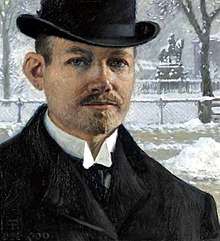
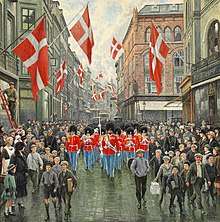
Biography
Paul Fischer was born in Copenhagen, Denmark. He belonged to the fourth generation of a Jewish family which originally came from Poland. He was the son of Philip August Fischer (1817-1907) and Gustafva Albertina Svedgren (1827-83). The family was upper middle class; His father had started as a painter, but later succeeded in the business of manufacturing paints and lacquers.[2]
His formal art education lasted only a short time in his mid teens when he spent two years at the Royal Danish Academy of Art in Copenhagen. Fischer began to paint when he was still young, guided by his father. He worked from 1878-88 at the father's factory and exhibited regularly at Charlottenborg Spring Exhibition 1884-1902.[1]
It was thanks to a painting he had published in Ude og Hjemme that his reputation began to evolve as he came in contact with young Danish naturalists. His earlier paintings depict city life. For this reason, he has been called "Copenhagen's painter" (Københavns maler). After a stay in Paris from 1891–1895, his colours became richer and lighter. It was not long before Fischer gained fame as a painter of cities, not just Copenhagen, but scenes from Scandinavia, Italy and Germany, reaching his zenith between 1890 and 1910.[3]
He benefited from contemporaries in Norway and Sweden, especially Carl Larsson. Around this time, he also painted bright, sunny bathing scenes, some with nude women, and developed an interest in posters, inspired by Théophile Steinlen and Henri de Toulouse-Lautrec. [4]
During the period when he actively painted, Danish art was dominated by Laurits Tuxen. Despite Fischer's lack of critical recognition during his lifetime, his art sold well. One major event in which he succeeded over Tuxen was when Sweden transferred the sovereignty of Norway back to the Norwegians - Fischer rather than Tuxen got the commission from the King of Norway to paint the event.[5]
Personal life
Fischer was first married in 1886 to Dagny Grønneberg (1867-1920) The marriage was dissolved. He was married a second time in 1914 with concert singer Martha Vilhelmine Jensen (1888-1966). He died in Gentofte during 1934.[1]
Gallery
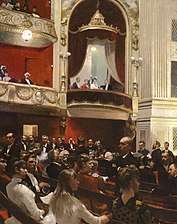 An Evening at the Royal Theatre (1887-88)
An Evening at the Royal Theatre (1887-88)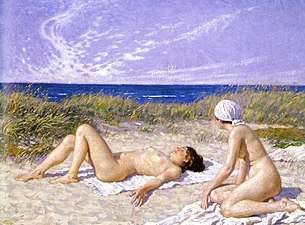 Sunbathing in the Dunes (1916)
Sunbathing in the Dunes (1916)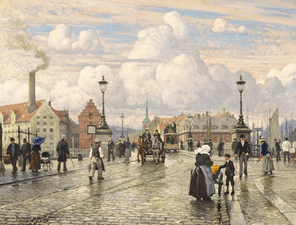 Scene from Knippelsbro (1924)
Scene from Knippelsbro (1924) City Hall Square in Copenhagen (1900)
City Hall Square in Copenhagen (1900)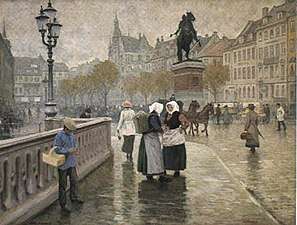 Højbro Plads seen from Højbro (1900)
Højbro Plads seen from Højbro (1900)
See also
- Art of Denmark
References
- Sigurd Schultz. "Paul Fischer". Dansk Biografisk Leksikon, Gyldendal. Retrieved April 1, 2019.
- "Paul Fischer (Danish, 1860–1934)". artnet.com. Retrieved April 1, 2019.
- Paul Fischer from Obro Gallery. Retrieved 16 December 2008.
- Erik Mortensen. Paul Fischer Kunstindeks Danmark & Weilbach Kunstnerleksikon. Retrieved 16 December 2008.
- Paul Gustav Fischer from Tigertail Virtual Museum. Archived 2006-10-03 at the Wayback Machine Retrieved 16 December 2008.
External links
| Wikimedia Commons has media related to Paul Gustav Fischer. |